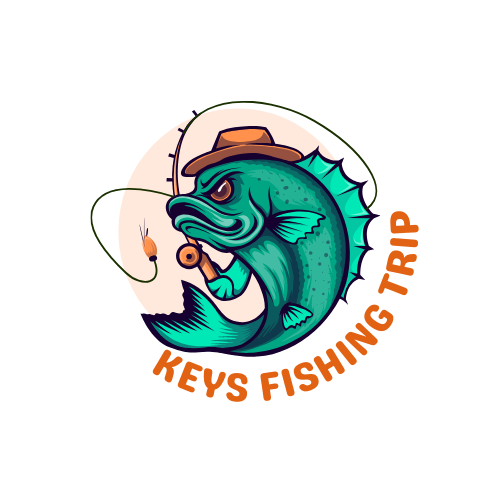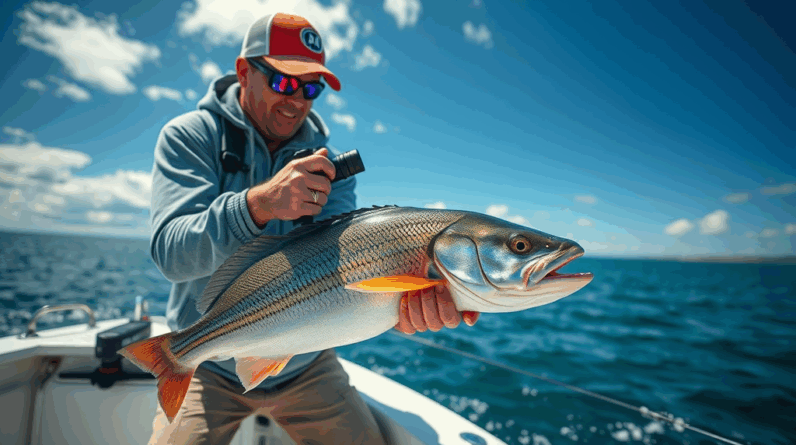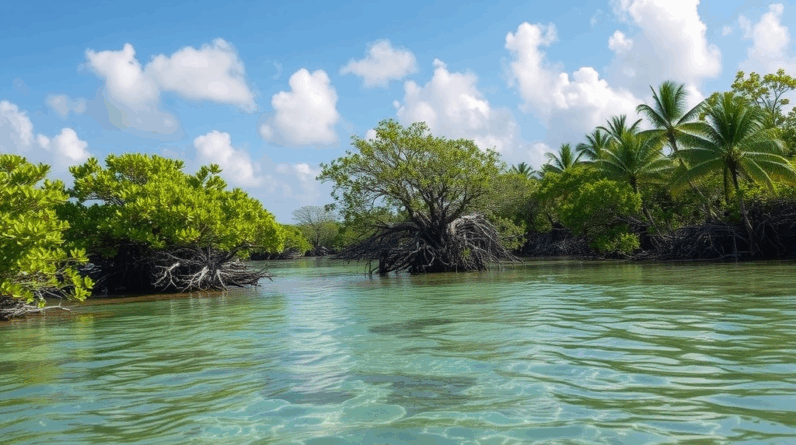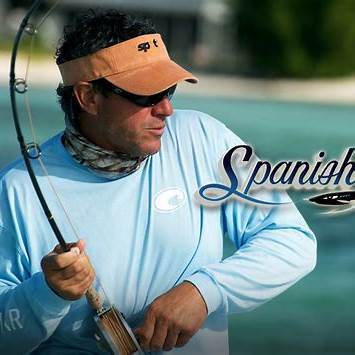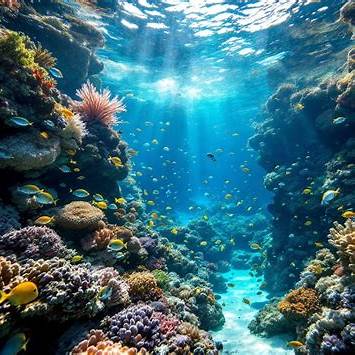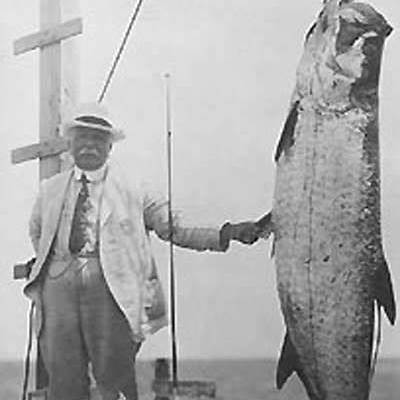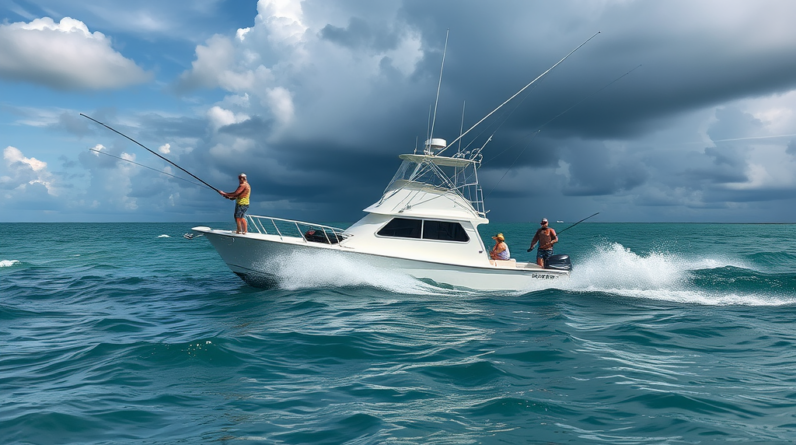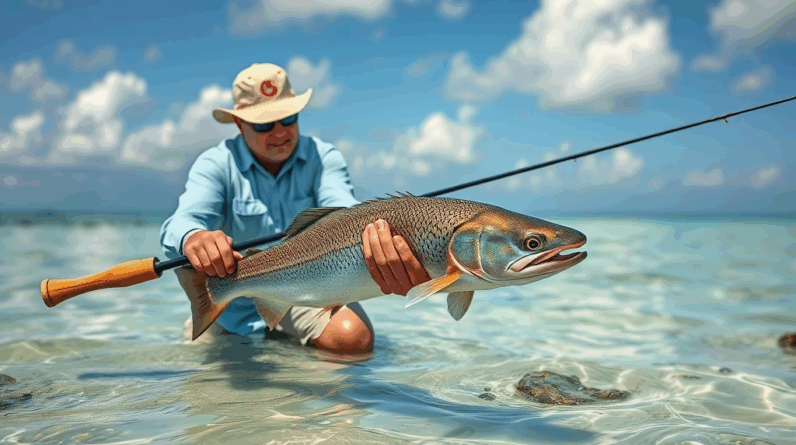
Table of Contents
Selecting the Right Fly Rod for Fishing in the Florida Keys
Fishing in the Florida Keys is a fantastic experience, and choosing the right fly rod can make all the difference. The warm waters and diverse fish species demand a specific approach when selecting your gear. Here’s how to choose the correct fly rod for your adventures in this beautiful locale.
First, consider the types of fish you’ll be targeting. The Florida Keys offer a variety of species, including tarpon, bonefish, permit, and snapper. Each fish has different characteristics that influence your fly rod choice.
Determine the Line Weight
The line weight is a critical factor in selecting a fly rod for fishing in the Florida Keys. Generally, you’ll want:
- Weight 8-10: Perfect for tarpon and large game fish.
- Weight 6-8: Ideal for bonefish and smaller species.
- Weight 4-6: Suitable for targeting snapper and smaller fish.
Choosing the correct line weight ensures you have enough backbone to handle the fish, while still being light enough for long, accurate casts.
Rod Length Matters
The length of your fly rod plays a significant role in your casting ability and line control. For fishing in the Keys, consider the following lengths:
- 9 to 10 feet: Great for most situations, allowing for good casting distance and line control.
- 8.5 feet or shorter: Offers better maneuverability in tight spaces like mangroves and reefs.
- Over 10 feet: Useful for special situations like deep water or large fly presentations.
Match the rod length with your fishing style and environment to maximize efficiency.
Choose the Right Action
Fly rods come in various actions: fast, medium, and slow. Action determines how much of the rod flexes when casting and playing fish. For the Florida Keys:
- Fast Action: Suitable for long-distance casting and wind; great for targeting larger species.
- Medium Action: Offers versatility for beginners and those targeting multiple species.
- Slow Action: Best for delicate presentations and smaller flies, ideal for spooky fish.
Different fishing scenarios will call for different rod actions, so choose wisely based on your needs.
Material Considerations
Fly rods are typically made from either graphite or fiberglass. Each has its benefits:
- Graphite: Lighter, more sensitive, and offers better performance for most anglers.
- Fiberglass: Durable and excellent for beginners due to its forgiving nature.
Your choice of material can greatly affect your fishing experience. Graphite rods allow for quick actions and smoother casts, while fiberglass rods provide more flex for a relaxed fishing experience.
Reel Balance and Compatibility
Your fly rod should balance well with your fly reel. An unbalanced setup can lead to fatigue and decreased performance. A good rule of thumb is to match the rod weight with a reel that holds the appropriate line weight. This balance is essential for long days on the water.
Budget Considerations
While it’s tempting to go for the most expensive rod on the market, there are excellent options across all price ranges. Consider your budget, but remember that investing in a good quality rod will enhance your fishing experience. Here’s a simple guide:
- Under $200: Good for beginners and casual anglers.
- $200 – $500: Offers decent performance for regular anglers.
- Above $500: Ideal for serious enthusiasts or professionals.
Ultimately, the correct fly rod for fishing in the Florida Keys is one that matches your fishing style, targets the right species, and feels comfortable in your hands. Test several rods if possible, and take your time to ensure you find the right fit. Happy fishing!
Understanding Different Fly Rod Lengths and Actions
When it comes to fly fishing, selecting the right rod is crucial for success, especially in a diverse fishing location like the Florida Keys. Understanding different fly rod lengths and actions can significantly enhance your casting accuracy and overall fishing experience. Here, we delve into these concepts to aid you in making an informed choice tailored to your specific needs.
Fly Rod Lengths Explained
Fly rods come in various lengths, each suited for different fishing conditions and techniques. Here’s a breakdown of common lengths and their advantages:
- 7-8 Feet: Ideal for small streams and tight spaces where precision and short casts are needed. Perfect for targeting smaller fish like panfish and trout.
- 8-9 Feet: The most versatile length, offering a balance of distance and accuracy. Great for rivers, lakes, and saltwater fishing. It can help you catch a variety of species, from bass to tarpon.
- 9-11 Feet: Commonly used for steelhead and salmon fishing. Longer rods give you a greater reach and enhance your ability to mend line effectively. Especially useful in larger rivers or when you need to cover more water.
- 11+ Feet: These rods are typically used for specialized techniques like spey casting, mainly in large rivers for targeting big fish.
Understanding Fly Rod Action
The action of a fly rod determines how much it bends when pressure is applied during casting or when fighting a fish. This affects both casting and fish-fighting capabilities. Fly rod actions are categorized into three main types:
- Slow Action: These rods bend more throughout their entire length. They are forgiving and provide excellent feedback, making them perfect for beginners. Slow action rods excel in delicate presentations, ideal for targeting spooky fish in clear water.
- Medium Action: A mid-range option that offers a balance between flexibility and stiffness. These rods can perform well in various situations, making them suitable for both beginners and advanced anglers. They allow for decent casting distance while maintaining accuracy, useful for both freshwater and saltwater fishing.
- Fast Action: Fast action rods bend primarily at the tip. They are ideal for casting into the wind and making long-distance throws. These rods provide quick response times and are excellent for powerful fish. However, they may require more skill to use effectively.
Choosing the Right Length and Action for Florida Keys Fishing
The Florida Keys offer a unique fishing experience with its diverse marine life and varying conditions. It’s essential to choose the right rod length and action based on what type of fishing you plan to do.
If you’re targeting smaller species like bonefish or permit in the shallow flats, a rod length of 8-9 feet with a medium to fast action would work well. This combination allows for quick casting and accuracy, whether you’re casting to a visible fish or working in tighter spots.
For larger game like tarpon or shark, going with a longer rod of 9-10 feet and a fast action will give you the advantage you need. Longer rods provide better line control and enhanced ability to throw larger flies while maintaining a fighting advantage against strong currents and powerful fish.
Material Matters
Aside from length and action, consider the material of the rod. Most modern fly rods are made from graphite or fiberglass. Graphite is lighter and more sensitive, making it a preferred choice for many anglers. Fiberglass rods are more forgiving, often favored by beginners or those who appreciate their traditional feel.
Finding Your Perfect Rod
Ultimately, the best way to choose the correct fly rod for fishing in the Florida Keys is to consider your personal preferences, experience level, and the conditions you’ll encounter. Trying out different lengths and actions in local shops or demo days will help you understand what feels right for you. Engaging with other local anglers can also provide valuable insights tailored to your fishing experiences in this incredible region.
The Importance of Line Weight for Florida Keys Fishing
When fishing in the Florida Keys, understanding line weight is crucial for a successful experience. The right line weight can significantly affect your catch rate, affect your casting distance, and ensure you can handle the species you are targeting. Let’s dive into why line weight matters and how you can choose the right one for your fishing adventures.
Different species of fish found in the Florida Keys require different line weights. Here’s a quick list highlighting common fish and suggested line weights:
- Bonefish: 8-10 lb test line
- Tarpon: 10-20 lb test line
- Permit: 10-20 lb test line
- Snapper: 10-30 lb test line
- Grouper: 20-50 lb test line
When you pick the right line weight, you are effectively gearing up for the battles ahead. Each fish behaves differently once hooked; some will run fast while others will attempt to dive into structures, making the choice of line weight critical. Here are a few factors to consider:
1. Target Species: Knowing what fish you plan to catch affects your line choice. For light species like bonefish, you don’t need heavy tackle. However, for larger fish like tarpon, you need a stronger line to withstand their powerful runs.
2. Fishing Method: The technique you use also influences your line weight choice. Fly fishing generally requires lighter lines, while deep-sea fishing may necessitate much heavier line weights to manage the pressure and trolling speeds involved.
3. Water Conditions: The waters of the Florida Keys can vary from calm, shallow flats to deeper, moving waters. In calmer conditions, lighter lines may grant you better presentation, while in rougher waters, heavier lines offer more control and strength.
When fishing in the Keys, it’s essential also to note that line weight impacts how long you can fish without tiring. Heavier lines may be more taxing over prolonged periods, affecting your stamina and enjoyment during the trip.
Castability is another crucial element influenced by line weight. Heavier lines can reach farther distances, but they may also be more difficult to manage for precise casts. If you’re aiming for a specific target, lighter lines allow for more delicate control and accuracy, enabling you to better present your bait or fly.
Additionally, consider the type of reel you will use in conjunction with your line. Spinning reels generally work better with lighter lines, while baitcasting reels are suited for heavier lines. Balancing your reel type with the appropriate line weight can optimize your gear setup.
It’s important also to consider the pound test of the line. Higher pound test lines mean increased strength but also reduced sensitivity. This sensitivity can be crucial in detecting bites, especially in the clear waters of the Keys where fish can be relatively cautious.
Test your line weight under varying conditions. Sometimes, what seems like the right choice in calm water may not hold up in wind or currents. Bringing a few line options to your fishing expedition allows for flexibility and adaptability, enhancing your fishing experience.
The line you choose can also affect your catch-and-release success. Using appropriate line weights minimizes the chance of overstretching or damaging the fish. Remember, ethical practices in fishing contribute to preserving the delicate ecosystem of the Florida Keys.
Ultimately, choosing the correct line weight for fishing in the Florida Keys comes down to understanding your equipment, the environment, and the fish. With this knowledge, you can make informed decisions that lead to more successful fishing outings. You will not only improve your catch rate but also gain a deeper appreciation for the fine nuances of fishing in one of the most beautiful regions in the world.
Choosing the Best Fly Rod Material for Durability and Performance
When you’re getting ready for a fishing adventure, one of the most important decisions you’ll make is choosing the right fly rod material. The material you select impacts not only how durable your rod will be but also its performance on the water. Whether you’re a seasoned angler or just starting, understanding the different materials is key to enhancing your fishing experience.
Fly rods typically come in three primary materials: fiberglass, graphite, and composite. Each material has its advantages and disadvantages, allowing you to match your choice to your fishing style and the environment you’ll be fishing in.
Fiberglass: The Classic Choice
Fiberglass rods have been around for decades and are known for their resilience and flexibility. Here’s what you should know:
- Durability: Fiberglass is robust and can withstand rough handling, making it great for beginners.
- Flexibility: They are more forgiving, allowing for smoother casting and better control.
- Weight: While they are generally heavier than graphite rods, the smooth action can help in catching fish.
- Cost: Fiberglass models tend to be more affordable, making them accessible for new anglers.
For anglers who prefer a traditional feel, fiberglass is an excellent choice. However, keep in mind that their weight can be a drawback for long days of casting.
Graphite: The Popular Champion
Graphite is perhaps the most popular material among serious anglers due to its high performance. Here’s a closer look:
- Lightweight: Graphite rods are notably lighter than fiberglass, allowing for all-day casting without fatigue.
- Sensitivity: They provide excellent sensitivity, letting you feel even the slightest nibble on your line.
- Stiffness: Graphite’s stiffness enables faster casting and greater accuracy, ideal for targeting specific fish.
- Variety: Available in different actions (fast, medium, slow), making it easy to find the perfect fit for your fishing style.
The downside is that graphite rods are often more expensive and can break if not handled carefully. If you want speed and accuracy for species like tarpon or bonefish in the Florida Keys, a graphite rod could be your best pick.
Composite: The Best of Both Worlds
Composite rods merge fiberglass and graphite materials, aiming to provide a balanced performance. Here’s a breakdown:
- Versatility: Combining materials allows for various flex patterns and actions.
- Performance: They often offer the sensitivity of graphite with the durability of fiberglass.
- Cost: Composite rods are generally priced between fiberglass and graphite, making them a good middle-ground option.
If you value durability but don’t want to sacrifice performance, a composite rod might be right for you. It’s particularly suitable if you plan to fish in a variety of environments.
Choosing the Right Material for You
When deciding on the best fly rod material, consider the following:
- Experience Level: Newer anglers might prefer the forgiving nature of fiberglass, while experienced fishers might opt for the sensitivity of graphite.
- Targeted Species: The choice of material can affect performance in catching specific species. Match your rod to the fish you’re pursuing.
- Budget: Assess how much you can spend. All three materials offer great rods in their price range, so you can find something that fits your wallet.
- Environment: Consider factors like saltwater vs. freshwater, as some materials may hold up better than others in harsh conditions.
Ultimately, the best fly rod material is one that fits your fishing style and needs. Take the time to consider what you value most in your fishing experience and choose wisely.
By understanding the strengths and weaknesses of fiberglass, graphite, and composite materials, you’ll be better equipped to make an informed decision. Happy fishing!
Tips for Maintaining Your Fly Rod While Fishing in Coastal Waters
Taking care of your fly rod is essential, especially when fishing in the coastal waters. Saltwater and marine environments can be harsh, and neglecting maintenance can shorten the life of your equipment. Here are some tips to help you maintain your fly rod effectively while enjoying your fishing trips.
Rinse Your Rod After Each Use
After spending a day fishing in the coastal waters, the first thing you should do is rinse your fly rod with fresh water. This helps remove salt, sand, and other debris that can cause corrosion. Make sure to focus on the guides and reel seat, where salt tends to build up the most. Rinse your rod gently to avoid damaging any components.
Drying is Key
Once you’ve rinsed your fly rod, it’s crucial to dry it thoroughly before storing it. Excess moisture can lead to mildew and damage the rod’s materials over time. Use a soft cloth to wipe down the rod and remove any remaining water. Allow it to air dry completely, especially in a cool, dry place, before putting it away.
Check for Damage Regularly
Inspect your rod and its components frequently for any signs of wear or damage. Look for:
- Cracked or chipped guides
- Frayed line
- Loose reel seat
- Cracks in the rod blank
If you find any issues, address them immediately to avoid further damage. For minor repairs, you might be able to fix them with a little know-how. For significant damage, consult a professional.
Proper Storage
Where and how you store your fly rod plays a big role in its lifespan. Use a rod tube for protection when traveling. Avoid wrapping your line tightly around the rod, as this can lead to tangles and kinks in the line. Instead, use a reel cover and keep your rod upright in a cool, dry area away from direct sunlight. Extreme temperatures can warp or damage the materials.
Line Maintenance
The line is just as important as the rod itself. It can accumulate debris and become damaged over time. Here are some tips to keep your line in good condition:
- Clean your line regularly with a mild soap solution to remove salt and grime.
- Inspect the line for nicks or weak spots.
- Replace sections of the line if needed, especially if you’re fishing heavier species.
A well-maintained line helps improve your casting performance and ensures you can handle the fish you’re targeting.
Lubricate Moving Parts
The reel is one of the most critical components of your fly fishing setup. Ensure to lubricate the moving parts regularly. Use a quality reel grease and oil designed specifically for fishing equipment. Apply lubricant sparingly to avoid attracting dirt and debris. Follow the manufacturer’s guidelines for maintaining your specific reel model.
Be Mindful of Salt
Salt can be detrimental to your gear, leading to deterioration. Besides rinsing, use gentler cleaning solutions designed for marine environments. A quick wipe-down after each fishing session can do wonders for longevity. Make this part of your post-fishing routine to keep everything looking and functioning at its best.
Seek Professional Help When Needed
If you’re not sure how to carry out maintenance or repair, don’t hesitate to reach out to a professional. Many fly shops in the Florida Keys offer rod and reel maintenance services. They can provide timely advice, repairs, or even a good cleaning, ensuring your gear is always in top shape for your next fishing adventure.
Maintaining your fly rod while fishing in coastal waters doesn’t have to be a chore. With a little diligence and attention, you can extend the life of your equipment, ensuring many successful fishing trips to come. Taking these simple steps not only helps keep your rod functioning well but also enhances your overall fishing experience.
Conclusion
Choosing the correct fly rod for fishing in the Florida Keys is essential for enjoying a successful day on the water. Whether you’re a seasoned angler or just starting out, understanding the nuances of fly rod length and action will help you match your gear with the diverse fishing conditions of this beautiful region. Remember, a longer rod may provide better casting distance, while a shorter rod offers control, which can be crucial in the unique environments you might encounter.
Line weight is another crucial factor; matching your line weight to both the rod and the species you are targeting will significantly improve your chances of landing that prized catch. The Florida Keys are home to various fish species, so knowing the ideal line weight can completely change your fishing experience.
When it comes to rod materials, prioritize options that combine durability with performance. Graphite rods offer lightweight sensitivity, while fibreglass provides added durability for tough conditions. Consider where you’ll be fishing to select a material that withstands the demands of saltwater environments.
Maintaining your fly rod is key to ensuring it performs well over time. Remember to rinse off any saltwater, check guides for damage, and store your rod properly. A little care goes a long way, allowing you to enjoy the incredible fisheries of the Florida Keys for years to come. By following these guidelines, you’ll be well-equipped to make the right choices, enhancing both your fishing experience and your chances of success. Happy casting!
